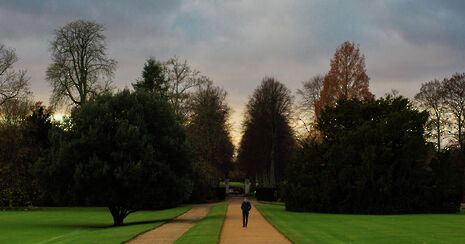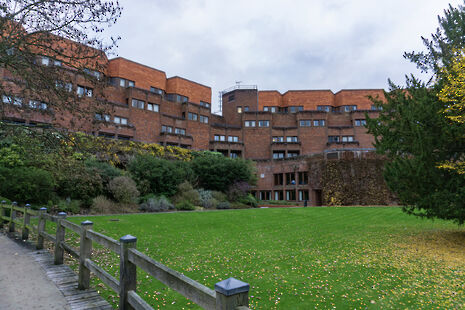Revealed: Students left unrepresented as JCRs, MCRs, faculties and campaigns skip CUSU Council
Varsity investigation reveals low attendance by many groups at CUSU’s executive body

Attendance at CUSU Council, the student union’s main decision-making body, has proved remarkably low over the last year, a Varsity investigation has discovered. Turnout was markedly varied as many college representatives and faculty representatives made almost no appearance, and the head of one autonomous campaign said they were not even aware of the Council’s existence until Week Five this Michaelmas, after over half a term in the job. The investigation found:
● Attendance at Council was less than half the targets set by CUSU
● Faculty representatives are almost entirely absent from Council
● An autonomous campaign leader was unaware of Council’s existence
● Many representatives were elected in uncontested, low-turnout votes
Looking at publicly available minutes for 12 Council meetings from Michaelmas 2015 to the second-most-recent meeting, Varsity found an average turnout of 35 voting representatives per meeting. This is despite CUSU’s 2014-17 Strategic Plan stating that “an average attendance of at least 70” at Council would be the measure of success in creating a students’ union “in which students have confidence”. This revelation comes shortly after the student body rejected in a referendum the decision by CUSU Council, made in a meeting in Michaelmas last year, attended by only 24 voting representatives, to campaign for the abolition of Class Lists.
Overall turnout was dragged down in part by the almost complete absence of faculty representatives, who are entitled to one vote per faculty, and the patchy attendance of the five Autonomous Campaigns. While the Disabled Students’ Campaign attended all 12 meetings, the BME Campaign attended only six and the International Students’ Campaign (iCUSU) only three. Henry Zhang, current Chair of iCUSU, told Varsity: “I cannot speak for the previous committees, but I was not informed of the CUSU Council only until Week 4/5 this term… I have no idea of the figures of the attendance by previous committee”. He also committed to “increasing our presence in CUSU councils later on this academic year”.
However, Connor MacDonald, HSPS faculty representative and one of only three faculty representatives to turn up to any of the 12 meetings, denied the absence of the faculties was a problem, saying: “Until CUSU deals with issues more directly related to the Faculties I see no reason why Faculty Reps ought to show up regularly.
“What’s more,” he continued, “I really don’t mind that CUSU Council doesn’t deal very much with Faculty issues… they have little power and clout in this area anyway.”
The majority of those who did turn up, however, were the representatives of the JCRs and MCRs. Of the 12 meetings examined, the college unions sent on average less than one voting representative each, despite all being entitled to at least two, and the vast majority three. Even this figure concealed huge variation between colleges. Robinson and Pembroke students were most frequently represented, with on average two votes per meeting from each college, while students at nine of the 29 CUSU affiliated colleges were represented by on average less than one vote per meeting.
Students at graduate and mature colleges were the worst represented at the 12 meetings. At the six colleges in question, Clare Hall, Darwin, Hughes Hall, Lucy Cavendish, St Edmund’s and Wolfson, each was represented on average at only one in three meetings over the period. Hughes Hall students were best represented of the mature colleges, with on average 0.75 of a vote at each meeting, while only one voting representative from Lucy Cavendish was present in one meeting of the 12. St Edmund’s Combination Room sent no voting representatives to any of the meetings looked at, though this would be in part affected by its former president also serving as CUSU chair last year.
Of the non-mature colleges, St John’s had the least representation by a significant margin. St John’s votes were only used in two of the 12 meetings. Ben Whitby, the College’s outgoing JCR president, conceded attendance had been low, blaming it on “the vast majority” of the JCR committee being medical students, and saying “many of us had supervisions on Monday evening [the time of CUSU council]”, as well as on the resignation of the college’s External Officer. Whitby told Varsity: “if CUSU were to vary the time of their meetings that would undoubtedly be helpful. I did mention this to a past CUSU president”. Currently, CUSU Council is held on alternate Mondays.

However, Whitby denied this meant John’s students were inadequately represented, suggesting: “we do read carefully over the minutes and agendas” and “send proxies where needed”. Indeed in both of the meetings where St John’s was represented it was through proxy, one of whom was a student of a different college. While the president did report wishing to present a motion at the last Council, he “then had to attend another unavoidable meeting last minute and so was not able to present the motion”.
A parallel investigation by Varsity revealed that JCR and MCR representatives are often elected uncontested and with low student turnout. In the same Strategic Plan which set the acceptable level of Council attendance, CUSU said democratic progress would have been achieved when “we’ll have supported Common Rooms to achieve an average voter turn-out of at least 45 per cent”. Looking at the 25 colleges which have recorded results on the CUSU online voting system, Varsity found that, across each of the recorded colleges’ most recent presidential elections, JCR turnout was on average slightly below the CUSU minimum target, at 43.5 per cent. However, at some colleges it was significantly lower, with St John’s president elected in a poll in which only 16 per cent of eligible voters took part. The outgoing president pinned this on the fact that the position was uncontested, and that the recent MCR elections had diverted attention. A total of seven of the contests for JCR president examined were uncontested.
Elections for MCR presidents, however, who have the same voting rights at Council, had a significantly lower average turnout. Of the 22 MCRs who used the CUSU system for their most recent presidential election, two-thirds were uncontested and turnout averaged 21 per cent, less than half the target set by CUSU. Asked about the finding, CUSU president Amatey Doku told Varsity that CUSU would be “undertaking a governance review [into] all aspects of CUSU Council” in the coming year, adding: “by the end of the academic year we hope to have new governing documents and new processes and procedures”.
The room where it happens: who can go to CUSU Council?
Council is defined by CUSU as its “principal representative, policy-making and administering body” with “primacy in all matters pertaining to CUSU”. It meets four times in Michaelmas and Lent, and twice in Easter, to debate and vote on motions, which, if passed, can only be overruled if found to be illegal, or by a referendum of the student body. While any student can attend, speak, and propose motions at Council, the right to vote is restricted. Each college can send three elected, voting representatives, split between its JCR and MCR where separate, except graduate colleges, which can send two. The five autonomous campaigns within the CUSU umbrella are also entitled to elect a voting representative, as are students of each Faculty.
Additional reporting by Monty Fynn and Siyang Wei
 Comment / Plastic pubs: the problem with Cambridge alehouses 5 January 2026
Comment / Plastic pubs: the problem with Cambridge alehouses 5 January 2026 News / Cambridge businesses concerned infrastructure delays will hurt growth5 January 2026
News / Cambridge businesses concerned infrastructure delays will hurt growth5 January 2026 News / New movement ‘Cambridge is Chopped’ launched to fight against hate crime7 January 2026
News / New movement ‘Cambridge is Chopped’ launched to fight against hate crime7 January 2026 News / AstraZeneca sues for £32 million over faulty construction at Cambridge Campus31 December 2025
News / AstraZeneca sues for £32 million over faulty construction at Cambridge Campus31 December 2025 Interviews / You don’t need to peak at Cambridge, says Robin Harding31 December 2025
Interviews / You don’t need to peak at Cambridge, says Robin Harding31 December 2025









